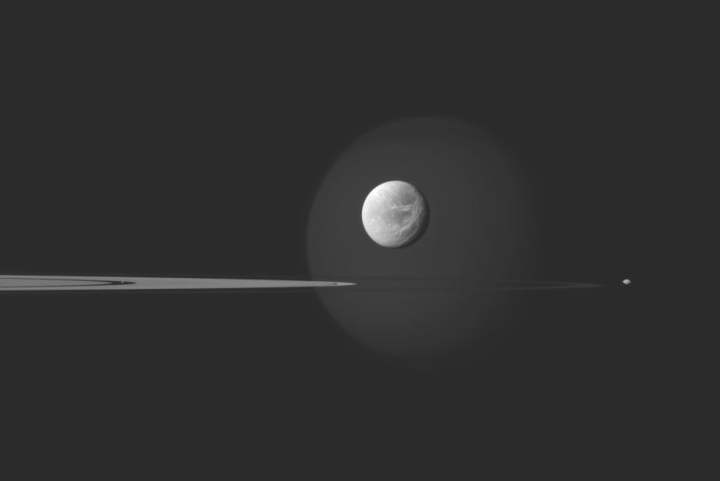
In 2014, Google added Mars to Google Maps to celebrate Curiosity’s second year roving the red planet and with this latest update, Google added 12 new virtual worlds. This brings the grand total to 16 celestial bodies including Dione, Enceladus, Iapetus, Mimas, Rhea, Titan, Europa, Ganymede, Io, Pluto, Ceres, Venus, Mercury, Mars, our moon, and, of course, Earth.
The latest maps were made from images gathered during NASA and European Space Agency initiatives, and the planetary tours are so Saturnian-centric thanks to the vast trove of data collected during the now defunct yet stalwart Cassini mission. It’s important to note that not all of the portions of these maps are nearly as detailed as others. For example, in areas where more comprehensive imagery is unavailable, the maps simply show a broad overview of a region. However, other portions are so thoroughly mapped you can ogle Olympus Mons, the potentially life-sustaining lakes of Titan, and even the massive impact crater on our distant so-called “Death Star” in stunning detail.
To begin the galactic tour, simply open Google Maps per usual and then zoom all the way out until your seemingly adrift around the Earth itself. Then, along the left side of the screen, the 16 available maps (and the International Space Station tour) are clickable to quickly beam you to your desired destination. If you prefer to skip the blast off from Street View you can simply begin the tour from low Earth orbit by clicking here.
If we whet your spacefaring whistle, you may also like to get your Sagan on with our best space photos gallery.
Editors' Recommendations
- Google Earth updates cool Timelapse feature with new imagery
- Hubble reveals glow of ‘ghostly’ light around our solar system
- See the entire observable universe represented in this interactive map
- These amazing Earth photos from the ISS look more like works of art
- Google Maps is adding new shopping tools for the holiday season


